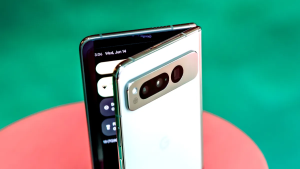Latest Developments in Foldable Phones
Foldable phones are transforming the landscape of mobile technology, combining the convenience of smartphones with the functionality of tablets. As manufacturers continue to innovate, the latest developments in foldable phones showcase advancements in design, durability, performance, and usability. This article explores the current state of foldable phone technology, highlighting the most significant innovations and the leading models available today.

The Evolution of Foldable Phones
Foldable phones have come a long way since their initial introduction. Early models faced several challenges, including durability issues, complex hinge mechanisms, and high production costs. However, continuous improvements in materials, engineering, and software have addressed many of these problems, making foldable phones more reliable and accessible to consumers.
Key Innovations in Foldable Phone Technology
- Advanced Hinge Mechanisms
- Durability: Modern foldable phones feature advanced hinge designs that enhance durability. Companies like Samsung and Huawei have developed robust hinges that can withstand hundreds of thousands of folds.
- Smooth Operation: Innovations in hinge technology ensure smoother folding and unfolding operations, providing a seamless user experience.
- Flexible Display Technology
- Improved Materials: The latest foldable phones use ultra-thin glass and other durable materials that offer better resistance to scratches and damage compared to earlier plastic displays.
- Higher Resolution: Advances in display technology have led to higher resolution screens, offering vibrant colors and sharp details.
- Enhanced Software Adaptability
- Adaptive Interfaces: Foldable phones come with software that adapts to different screen sizes and orientations, providing a consistent user experience whether the phone is folded or unfolded.
- Multitasking: Enhanced multitasking capabilities allow users to run multiple apps simultaneously, increasing productivity.
- Battery and Performance Improvements
- Optimized Power Consumption: Foldable phones now feature more efficient power management systems that optimize battery life even with larger displays.
- High-Performance Chips: The incorporation of high-performance processors ensures smooth operation, even when running demanding applications.
Top Foldable Phones on the Market
- Samsung Galaxy Z Fold 3
Features:
- Display: 7.6-inch QXGA+ Dynamic AMOLED 2X main display, 6.2-inch HD+ Super AMOLED cover display.
- Processor: Snapdragon 888.
- RAM: 12GB.
- Storage: 256GB/512GB.
- Cameras: Triple rear cameras (12MP wide, 12MP ultra-wide, 12MP telephoto), 4MP under-display front camera, 10MP cover camera.
- Battery: 4400mAh.
- OS: Android 11 with One UI 3.1.
Pros:
- High-quality display with adaptive refresh rate.
- Enhanced multitasking capabilities.
- Durable hinge and water resistance.
Cons:
- Expensive.
- Slight crease visible on the main screen.
Price: $1,799.99
- Huawei Mate X2
Features:
- Display: 8-inch OLED main display, 6.45-inch OLED cover display.
- Processor: Kirin 9000 5G.
- RAM: 8GB.
- Storage: 256GB/512GB.
- Cameras: Quad rear cameras (50MP wide, 12MP telephoto, 8MP periscope telephoto, 16MP ultra-wide), 16MP front camera.
- Battery: 4500mAh.
- OS: EMUI 11 (based on Android 10).
Pros:
- Superior camera system.
- Seamless hinge design.
- Excellent display quality.
Cons:
- Lack of Google services.
- High price.
Price: $2,700.00
- Microsoft Surface Duo 2
Features:
- Display: Dual 5.8-inch PixelSense Fusion AMOLED displays.
- Processor: Snapdragon 888.
- RAM: 8GB.
- Storage: 128GB/256GB/512GB.
- Cameras: Triple rear cameras (12MP wide, 12MP telephoto, 16MP ultra-wide), 12MP front camera.
- Battery: 4449mAh.
- OS: Android 11.
Pros:
- Unique dual-screen design.
- Enhanced productivity features.
- Smooth multitasking.
Cons:
- Large bezel around the screens.
- Expensive.
Price: $1,499.99
- Motorola Razr 5G
Features:
- Display: 6.2-inch P-OLED main display, 2.7-inch G-OLED cover display.
- Processor: Snapdragon 765G.
- RAM: 8GB.
- Storage: 256GB.
- Cameras: 48MP rear camera, 20MP front camera.
- Battery: 2800mAh.
- OS: Android 10.
Pros:
- Compact and nostalgic design.
- Quick view display for notifications.
- 5G support.
Cons:
- Smaller battery capacity.
- Mid-range performance.
Price: $1,399.99
- Oppo Find N
Features:
- Display: 7.1-inch LTPO AMOLED main display, 5.49-inch AMOLED cover display.
- Processor: Snapdragon 888.
- RAM: 8GB/12GB.
- Storage: 256GB/512GB.
- Cameras: Triple rear cameras (50MP wide, 13MP telephoto, 16MP ultra-wide), 32MP front camera.
- Battery: 4500mAh.
- OS: Android 11 with ColorOS 12.
Pros:
- Compact and user-friendly design.
- High-quality displays.
- Affordable compared to other foldables.
Cons:
- Limited global availability.
- Software optimization needed.
Price: $1,499.00
Competitive Table
| Product | Display | Processor | RAM | Storage Options | Cameras | Battery | Price |
| Samsung Galaxy Z Fold 3 | 7.6″ QXGA+ AMOLED, 6.2″ HD+ AMOLED | Snapdragon 888 | 12GB | 256GB, 512GB | 12MP + 12MP + 12MP, 4MP, 10MP | 4400mAh | $1,799.99 |
| Huawei Mate X2 | 8″ OLED, 6.45″ OLED | Kirin 9000 5G | 8GB | 256GB, 512GB | 50MP + 12MP + 8MP + 16MP, 16MP | 4500mAh | $2,700.00 |
| Microsoft Surface Duo 2 | Dual 5.8″ PixelSense Fusion AMOLED | Snapdragon 888 | 8GB | 128GB, 256GB, 512GB | 12MP + 12MP + 16MP, 12MP | 4449mAh | $1,499.99 |
| Motorola Razr 5G | 6.2″ P-OLED, 2.7″ G-OLED | Snapdragon 765G | 8GB | 256GB | 48MP, 20MP | 2800mAh | $1,399.99 |
| Oppo Find N | 7.1″ LTPO AMOLED, 5.49″ AMOLED | Snapdragon 888 | 8GB/12GB | 256GB, 512GB | 50MP + 13MP + 16MP, 32MP | 4500mAh | $1,499.00 |
Analysis Table
| Product | Pros | Cons |
| Samsung Galaxy Z Fold 3 | High-quality display, enhanced multitasking, durable | Expensive, slight screen crease |
| Huawei Mate X2 | Superior camera system, seamless hinge, excellent display | No Google services, high price |
| Microsoft Surface Duo 2 | Unique dual-screen design, productivity features | Large bezel, expensive |
| Motorola Razr 5G | Compact design, quick view display, 5G support | Smaller battery, mid-range performance |
| Oppo Find N | Compact design, high-quality displays, affordable | Limited availability, software optimization needed |
Detailed Reviews
Samsung Galaxy Z Fold 3
The Samsung Galaxy Z Fold 3 is a pinnacle of foldable phone technology, featuring a 7.6-inch QXGA+ Dynamic AMOLED 2X main display and a 6.2-inch HD+ Super AMOLED cover display. Powered by the Snapdragon 888 processor and equipped with 12GB of RAM, it delivers top-notch performance. The triple rear cameras, combined with a 4MP under-display front camera and a 10MP cover camera, offer excellent photography capabilities. Enhanced multitasking features, such as split-screen and app continuity, make it a productivity powerhouse. However, its high price and the slight crease on the main screen may be drawbacks for some users.
Huawei Mate X2
Huawei’s Mate X2 boasts an 8-inch OLED main display and a 6.45-inch OLED cover display. It runs on the Kirin 9000 5G processor, ensuring fast and efficient performance. The quad-camera setup, including a 50MP wide lens, provides superior photo quality. Its seamless hinge design and excellent display make it a top contender in the foldable market. The main drawbacks are the lack of Google services and its high price, limiting its appeal outside China.
Microsoft Surface Duo 2
The Surface Duo 2 features dual 5.8-inch PixelSense Fusion AMOLED displays, offering a unique dual-screen experience. The Snapdragon 888 processor and 8GB of RAM ensure smooth multitasking and productivity. The triple rear cameras and the front camera provide decent photo quality. While its dual-screen design enhances productivity, the large bezel around the screens and the high price may deter some users.
Motorola Razr 5G
The Motorola Razr 5G combines a nostalgic design with modern technology. Its 6.2-inch P-OLED main display and 2.7-inch G-OLED cover display are compact and functional. Powered by the Snapdragon 765G processor and 8GB of RAM, it offers mid-range performance. The 48MP rear camera and 20MP front camera are suitable for casual photography. Its compact design and 5G support are notable advantages, but the smaller battery capacity and mid-range performance are limitations.
Oppo Find N
The Oppo Find N features a 7.1-inch LTPO AMOLED main display and a 5.49-inch AMOLED cover display. It runs on the Snapdragon 888 processor with 8GB or 12GB of RAM. The triple rear cameras, including a 50MP wide lens, provide high-quality photos. Its compact and user-friendly design, combined with high-quality displays, make it an appealing choice. However, its limited global availability and need for software optimization are notable drawbacks.
Conclusion
The latest developments in foldable phones have significantly enhanced their durability, performance, and usability. Models like the Samsung Galaxy Z Fold 3 and Huawei Mate X2 showcase the pinnacle of foldable phone technology, offering high-quality displays, advanced hinge mechanisms, and superior performance. While these devices come with a high price tag, their innovative features justify the investment for tech enthusiasts and professionals seeking the ultimate mobile experience.
As the market continues to evolve, future foldable phones are expected to become more affordable and accessible, paving the way for mainstream adoption. For now, the models reviewed here represent the best the market has to offer, each catering to different user preferences and needs. Whether you prioritize camera quality, multitasking capabilities, or compact design, there’s a foldable phone that can meet your requirements.




